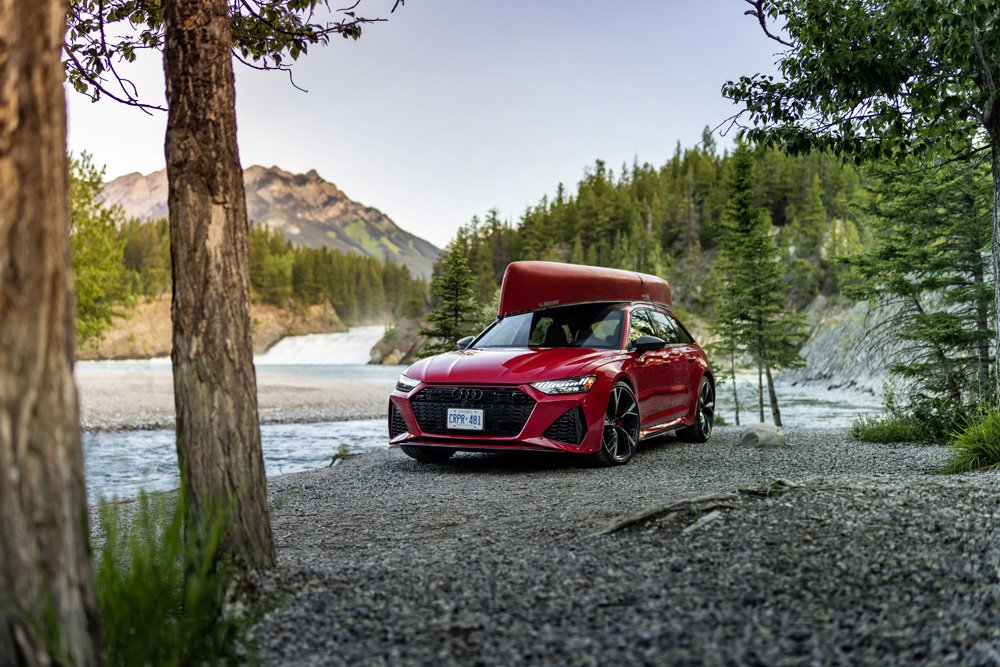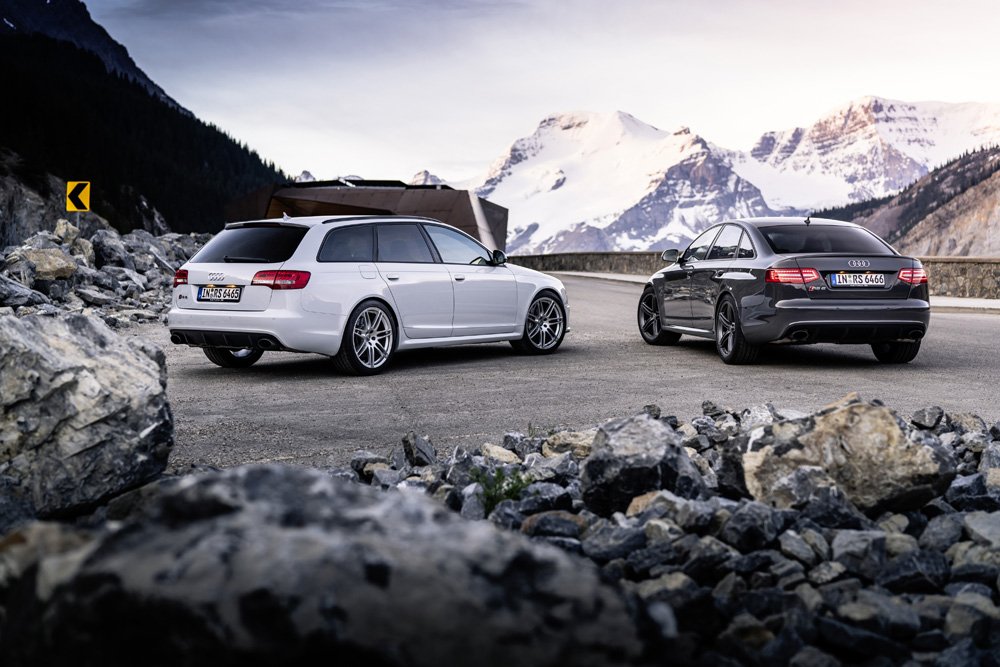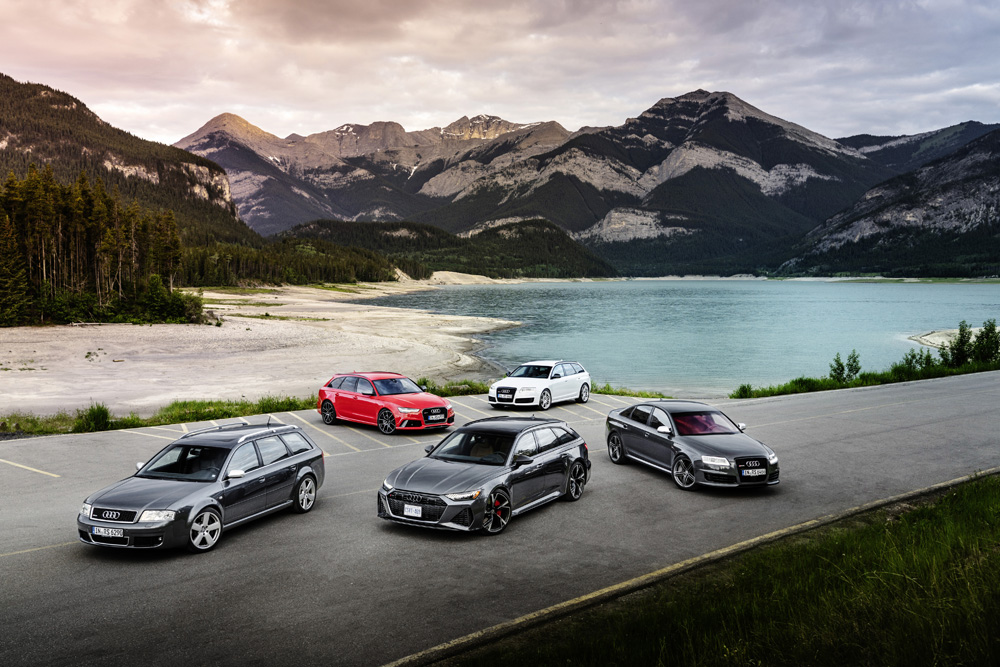2021 was a challenging year, marked globally by restrictions due to the coronavirus pandemic and semiconductor shortage, yet Audi UK delivered a total of 117,993 models. That represented an increase of 9.3% compared with the previous year and cemented Audi as the leading premium car brand in the UK as well as completing the year as the overall number two best-selling brand.
Audi continues to make headway with its range-wide electrification programme, which began with the world premiere of the all-electric Audi e-tron SUV in 2018, and by 2025, the manufacturer aims to offer more than 20 models with all-electric drive in the most important markets worldwide and achieve roughly 40% of its sales with electrified variants.
These will of course be underpinned by a range of models with classic layouts covering every relevant market segment from the compact class to the luxury class.
Within the Audi range, one car has been exciting a worldwide fanbase like no other for 20 years. Across four generations, the Audi RS 6 has set the tone for high-performance station wagons with impressive performance and outstanding everyday usability. It owes the success of its underlying concept from 2002 to its double-charged engine and all-wheel drive. The basic concept has been the same across every generation of the RS 6.
A desire for performance in the upper mid-range
Shortly after the start of the new millennium, what was then quattro GmbH (now Audi Sport GmbH) was faced with the question of which car the staff would give a sporty renovation to after the RS 4. It was an opportune moment for the Audi A6. The first generation (C5) underwent a product enhancement in 2001 and Audi also wanted to add more power under the hood in its upper mid-range.
The brand was self-aware and motorsports were in high demand. Audi drove its way to the winners stand on the first try at its premiere in the legendary 24-hour Le Mans in 1999 and again in 2000, 2001 and 2002. The Audi engineers at quattro GmbH put a great deal of effort into making the A6 a sportscar. That meant not only adapting the engine, suspension and transmission; Audi also shifted its appearance into a higher gear. It grew four centimetres in both length and width. New skirts, wider sills, a spoiler for the Avant, a distinctive breakaway edge for the Sedan, 18” or 19” wheels, and two oval tailpipes emphasised its sporty ambitions.
The objective was to add an eight-cylinder to the basic design of the A8, series D2. The engine was already on the job in the S6, giving it 340 PS without charging. Nonetheless, it needed a lot of detail work: a powerful engine that from then on was double-turbocharged and had 4.2 litres of displacement did not fit in the body of the A6 at first. Together with quattro GmbH, British engine manufacturer Cosworth was also responsible for the impressive 450 PS output and 560 Nm of torque.
To date, the C5 is the only RS 6 that is also a racing car from the start. The RS 6 Competition, which Champion Racing uses, outperformed its competitors with equal displacement in the 2003 SPEED GT World Challenge with Randy Pobst at the wheel. The V8 biturbo offered 475 PS, had a manual shift, and won on its first attempt.

The crowning achievement in engine construction continues
In 2008, six years after the first RS 6, the second generation C6 followed. Audi increased not only power and displacement, but also the number of cylinders for a total of ten. There were still two turboloaders, and now five litres of displacement. Altogether, that meant 580 PS and 650 Nm of torque, available starting at 1,500 rpm.
As was already the case with the C5, the ten-cylinder also needed a transmission that could handle power. The six-gear automatic that it used was substantially reworked to meet that need. Cooling, shifting speed, power distribution – all of it was improved.
With this combination of engine and transmission, Audi achieved a top speed of over 186 mph for the first time with the RS 6 plus. Acceleration in the regular RS 6 topped out at 155 mph with 174 mph available as an option for an additional charge.
In order to give passengers a sporty and comfortable ride to their destinations, Audi relied on the DRC suspension for the second time, something that customers now get as standard equipment in the Avant and the Sedan. For more everyday comfort across the whole spectrum of driving situations, the DRC suspension could be equipped for the first time with an additional adjustment unit on the shock absorbers that offered three-stage settings, for an additional price.
Making more from less
Fewer cylinders? That can’t be right! A concern customers raised when, with the C7, Audi moved away from the ten-cylinder biturbo in 2013 and returned to a double-turbocharged eight-cylinder with four litres of displacement – the smallest engine in the history of the RS 6. Yet the critics were soon silenced. Audi had put together a package that left the previous RS 6 models far behind it in terms of driving dynamics and efficiency. Above all, this made it possible to systematically reduce weight. Among other things, a significantly higher portion of aluminium, including all of the attached parts, reduced the weight of the C7 generation by a good 265 lbs.
One novelty for the third generation of the RS 6: customers wanted a little bit more comfort, so air suspension became a standard feature for the first time. Now 20mm lower and with sportier tuning, adaptive air suspension increased day-to-day driving enjoyment. Opinions were unambiguous: the RS 6 C7 stood apart from its predecessors in every area, be it the drive system, suspension, comfort, or efficiency.

The best to date, but the work is never done
In 2019, three years before its 20th birthday, the fourth generation of the RS 6 (C8) rolled out to dealerships and stayed faithful to its heritage. Four-litres displacement, biturbo, 600 PS, and now 800 Nm of torque. For the first time in its history, this car is supported by a 48-volt mild hybrid system, improving efficiency even further. Although it is a bit heavier, the RS 6 Avant* races to 62 mph in a brisk 3.6 seconds; it only needs 12 seconds to reach 124 mph.
And the design? Where the C5, C6, and C7 generations of the RS 6 only stood out as power station wagons on the second look, the C8 creates a different impression. The roof, front doors, and tailgate are the only things that the RS 6 Avant shares with the A6 Avant base model. The other components were altered specifically for the RS and the body was widened by a noticeable eight centimetres.
Unlike its predecessors, the C8 is not manufactured in separate halls – which have since been renamed Audi Sport GmbH – but rather roll off the assembly line in Neckarsulm ready for the showroom. That’s an indication of how flexible these production sites are. The RS 6* C8 is definitively evolving from a niche car into a success story that is in demand around the world.

